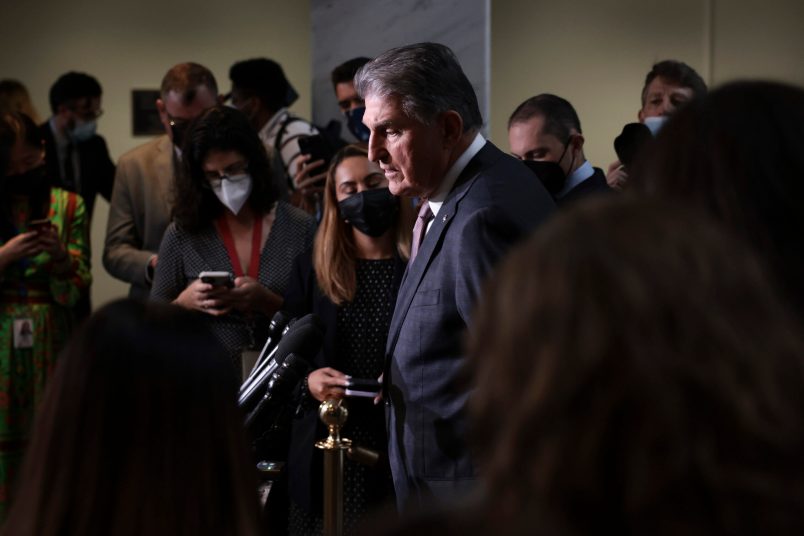Like much of the reconciliation package, its chief climate provision has existed in a weird limbo for weeks.
Senate staffers, the crafters of the policy and outside experts continue to meet and fine tune the Clean Electricity Performance Program (CEPP), uncovering bugs and trying to balance getting rid of them with political constraints. But while they’re tinkering, a huge existential threat to the whole endeavor looms in the form of Sen. Joe Manchin (D-WV).
“I have little idea if they are on the verge of chucking it out completely, or on the verge of passing it as is,” Steve Cicala, an assistant economics professor at Tufts who has been meeting with Senate staff, told TPM. “It’s somewhere between those two extremes: either dead or done.”
Recent events may have toed the program towards the death end of the spectrum.
Manchin told White House aides last week that he cannot support the program in its current form, according to the Washington Post. One person told the Post that he “doesn’t see a formulation that could get past his concerns with regard to rewarding utilities for behavior they’re already taking.” Since the entire program is predicated on the idea of encouraging utilities to up their electricity share from cleaner sources more quickly with monetary incentives, this seems pretty dire.
Democrats are reportedly considering a suite of options to water down the policy and make it more Manchin-friendly: adjusting the definition of clean energy in the plan so that it could encompass coal and natural gas facilities equipped with carbon capture technology; lowering the annual 4 percent clean energy threshold utilities must hit; even doing away with the penalties altogether.
All of those changes would likely upset the experts who designed the program and most Democrats alike. Some could be untenable.
“There is wide consensus that a CEPP without payments would be far worse than nothing at all — just go home at that point, because it would be catastrophic,” Cicala said of nixing the penalties. “It would be a money machine for utilities that will deliver virtually no clean energy.”
Cicala and the rest of a group of experts have been trying to drive that point home to the congressional authors, trying to argue against what they see as massive bugs in the program that could let utilities game the system and produce very little clean energy — even while the program’s survival is a day-by-day question, depending on Manchin’s whims.
They’ve identified the prevailing problem as the current asymmetry between the payments and penalties for each megawatt hour above or below the annual threshold the utility must hit. In its present iteration, the payment is $150 per megawatt hour above 1.5 percent of the previous year’s energy production, and the penalty only $40.
The experts see opportunity for two companies working together to take advantage of the discrepancy, or selling clean energy credits around and fooling the government into paying for the same bundle of energy twice.
“The asymmetry has been described to us as a dealbreaker, immovable,” Cicala said. “We’re trying to establish a better understanding that it’s causing more trouble than solving problems.”
The effort continues, as experts try to shore up the program that’s at the center of Democrats’ climate hopes. It’s like building a house of cards near a landmine.
“We’re having all of these discussions about what is the menu of options,” Cicala said. “And ‘what is Manchin gonna do’ is very much in the background.”







Shame on those two. At this point they’re actually responsible for killing people.
Let’s not forget about the fifty GOP Senators who have no intention of voting for the reconciliation bill, period. They are willing to doom their own children and grandchildren to living in a world that will mostly be too hot for human habitation. They are traitors to the human race.
Fearless Leader Koch has ordered Boris Manchin and Natasha Sinema to join with the Republicans to kill both bills. Nothing will be passed,
I’m hoping you’re wrong about this…but fear you may be right.
It’s always darkest before, well, doomsday.